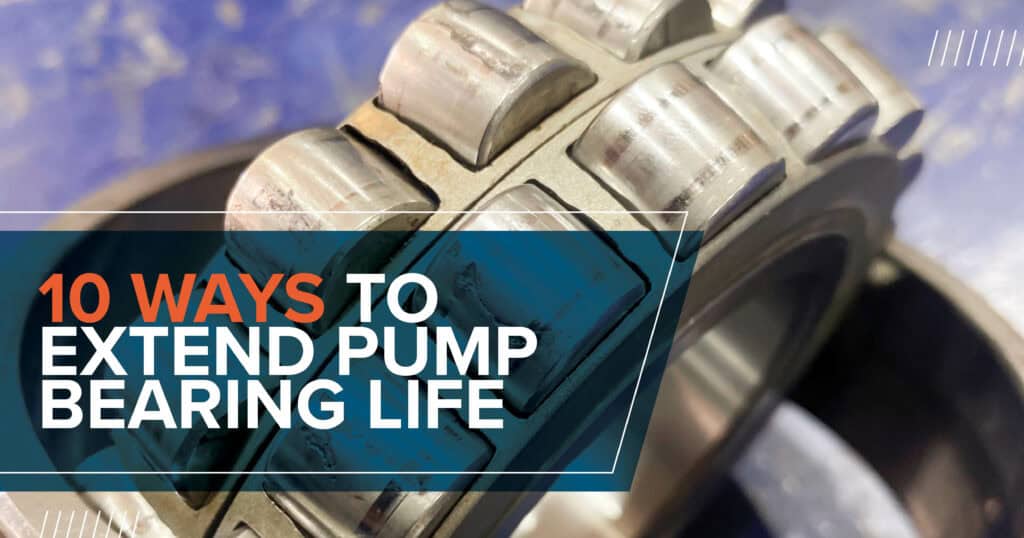Pump bearings are the unsung heroes of efficient, reliable industrial operations. These critical components support rotating parts, minimize friction, and ensure smooth pump operation. Neglecting proper bearing maintenance can lead to costly failures, unplanned downtime, and diminished system performance. This article explores 10 actionable tips to extend the life of your pump bearings to keep your equipment running smoothly and efficiently.
Why Pump Bearings Matter
Pump bearings play a vital role to ensure a pump’s reliability. When bearings fail, they can cause overheating, excessive vibration, and pump inefficiency. By prioritizing their care, you can avoid these issues and keep your operations on track.
10 Tips for Pump Bearing Maintenance
- Use the right lubricant.
Bearings need proper lubrication to reduce friction and wear. Use the recommended lubricant type and quantity for your pump model. In addition, follow a consistent lubrication schedule to prevent dry running and overheating. - Follow a regular lubrication schedule.
Over- or under-lubricating can cause premature wear. Develop a routine maintenance plan that specifies lubrication intervals based on manufacturer recommendations and operating conditions. - Ensure proper installation.
Misaligned or improperly installed bearings are prone to premature failure. Use precision tools during installation and follow manufacturer guidelines to ensure correct placement. - Maintain accurate alignment.
Misalignment between the pump and its driver puts undue stress on bearings. Regular alignment checks—including the use of professional laser alignment services—can significantly extend bearing life. - Keep the environment clean.
Contaminants such as dust, dirt, and moisture can infiltrate bearings and cause damage. Install seals or shields and maintain a clean operating environment to prevent debris from entering. - Monitor bearing temperature.
Overheating is an early warning sign of bearing issues. Use infrared thermometers or temperature sensors to monitor conditions and act quickly if abnormal temperatures are detected. - Conduct vibration analysis.
Excessive vibration often signals bearing wear. Implement vibration monitoring systems to catch problems early and schedule maintenance before issues escalate. - Inspect bearings regularly.
Periodic visual inspections can identify corrosion, cracks, or other signs of damage. Replace worn bearings promptly to prevent further complications. - Upgrade to high-quality bearings.
Advanced materials and designs can handle higher loads and resist wear better than standard bearings. Evaluate your operations and consider investing in premium options for long-term savings. - Train your maintenance team.
Provide your team with proper training on best practices for bearing care, including installation, lubrication, and troubleshooting techniques. Well-informed personnel are key to maximizing bearing longevity.
Stay Diligent with Your Bearing Maintenance
Pump bearing maintenance is not just about avoiding failure. It’s about ensuring peak performance, reducing costs, and maintaining uptime. By implementing these 10 tips, you can significantly extend the life of your pump bearings and improve the overall efficiency of your operations.
For expert assistance with bearing alignment, inspections, or replacement, trust DXP Pacific. Our team specializes in pump solutions tailored to your unique needs. Contact us today to learn how we can keep your systems running smoothly.

